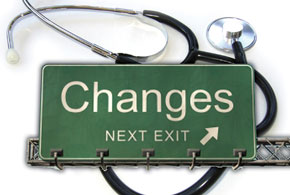By Tom Schwenger
Digital disruption is occurring in health care. Advances in technology are generating opportunities for pharmaceutical companies to meet patient needs and improve their health care experiences and outcomes.
A groundswell of innovations is yielding tremendous benefits for patients. The adoption of digital tools is driving improvements in patient self-advocacy, symptom and disease awareness, diagnosis, medication adherence and customer service.
Wearable monitoring devices are improving access and the quality of care for many individuals. Analytics are optimizing drug development, clinical trials, commercial activities and the supply chain. Using analytics in clinical trials is allowing pharmaceutical companies to innovate new treatments for the most difficult-to-treat medical conditions. This has resulted in improved quality and efficiency, as well as greater savings for companies and patients.
Various factors are driving the uptick of digital adoption in the life sciences and health care. Digitization can increase revenue for companies by enabling them to expand their customer reach, improve the customer experience and protect existing customer relationships. In addition, digital devices such as wearables are changing the way consumers and patients deal with their health, making them more proactive.
Digital Tools Equal Digitized Consumers
Digitization also represents a crucial change for patients. With digital tools, many can take a more active, participatory role in their health care and wellness decision making. Digitized consumers are more engaged, and they believe they can better control their health destiny.
Their incentive: having access to their own health data. They want to know more than just their pulse and blood pressure. They want to know what to do to improve a health issue.
And patients are benefiting. Wearable devices, such as smartwatches, gather patient information noninvasively. They offer constant, objective monitoring, producing data that patients, researchers and physicians can analyze to better manage health conditions. These devices will eventually take on more of a diagnostic role, helping diagnose specific conditions— even at the point of care.
Providers will gain new insights by integrating medical and behavioral data. This will open new opportunities in diagnosing and treating patients. Doctors will be able to see immediately whether patients are taking their medications. In addition, patients and providers are using digital technology to share medical resources and costs.
There are still issues to be addressed, including security, privacy, standards, connectivity and interoperability. Some of these concerns will be improved with advanced software and encryption technologies. Also, among the services that patients most want but are not receiving, are measuring and tracking alerts, such as monitoring of blood glucose levels. Many patients expect to receive these services and want pharmaceutical companies to be part of the solution.
Also, pharmaceutical companies must invest in software to improve big data analytical capabilities and incorporate a growing volume of data, ranging from laboratory results and remote sensor data to social media posts.










